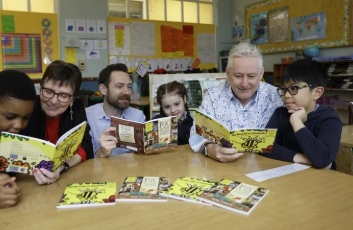Children’s books are a surprisingly effective resource for language learners of all ages. Their simple vocabulary, clear sentence structure, and engaging illustrations make them ideal for building foundational skills and reinforcing new concepts. Here’s how to use children’s books as a powerful tool in your language learning journey.
1. Choose the Right Books for Your Level
Start with picture books or beginner readers that match your current ability. Look for books with short sentences and familiar topics like animals, weather, or family. As your skills improve, you can move on to more complex stories with dialogue and plot development.
2. Read Aloud for Better Pronunciation
Reading aloud helps you practice pronunciation, rhythm, and intonation. It also improves speaking confidence. Try to mimic the way a native speaker might read the story—this can help you develop a more natural accent over time.
3. Use Pictures to Support Understanding
The illustrations in children’s books are a great aid for comprehension. When you see a new word, use the pictures to guess its meaning. This builds your ability to understand context without relying on translations.
4. Focus on Repetition and Patterns
Children’s stories often repeat key words and phrases. This repetition reinforces vocabulary and helps you recognize sentence structures. Try reading the same book several times to become more comfortable with the language.
5. Build a Vocabulary List
As you read, write down new words and expressions. Create flashcards or a word journal to help you review and remember them. Group words by topic, such as colors, actions, or emotions, to make them easier to study.
6. Pair Books with Audio Versions
If available, listen to an audio recording of the book while you read along. This helps you match written words with correct pronunciation and supports listening comprehension.
7. Create Fun Activities
Extend your learning by drawing your own version of the story, acting out scenes, or rewriting the ending. These creative activities help reinforce language skills and make learning more interactive and memorable.
Conclusion
Using children’s books for language learning is an enjoyable and effective strategy for learners of all ages. With their simple language, vivid illustrations, and repetitive structure, these books provide a strong foundation for developing vocabulary, grammar, and comprehension. Add a few to your learning routine and enjoy the benefits of storytelling in your new language.














